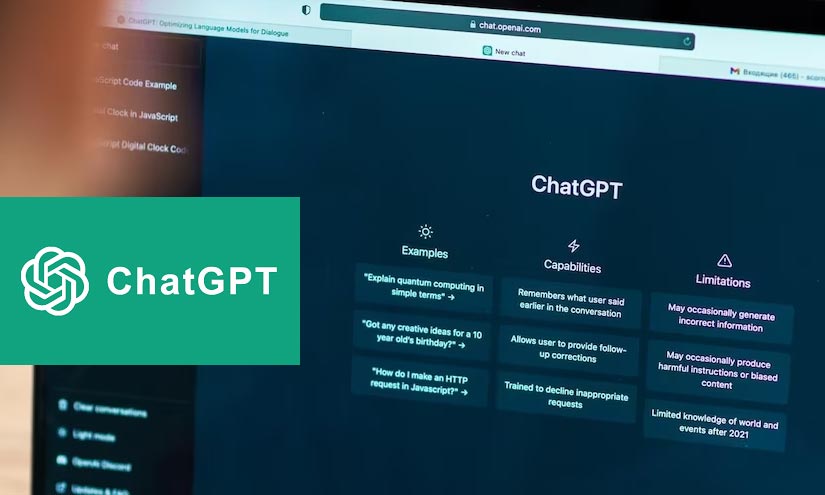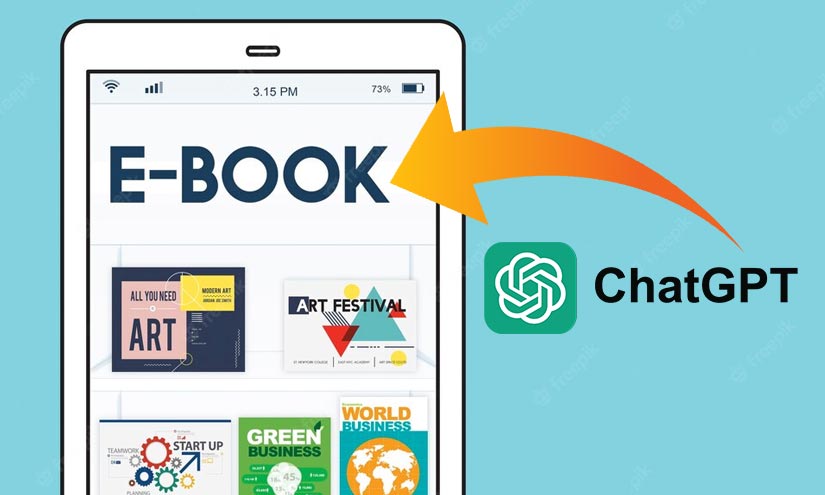ChatGPT is an AI language model that can generate human-like responses to questions or statements. It has been trained on a massive amount of text data and can provide various information on various topics.
However, using ChatGPT effectively requires skill and an understanding of its capabilities and limitations.
This blog post will provide tips on using ChatGPT effectively to get the best possible responses.
Table of Contents
How to use ChatGPT
To use ChatGPT, you can start by typing in a question or a statement in the chat window, and ChatGPT will provide you with a response based on its training data and language model.
Here are some tips for using ChatGPT effectively:
Step 1: Provide Clear and Specific Input
- Start with a concise and well-defined question or statement.
- Avoid using vague or ambiguous language that could be misinterpreted.
- Use proper grammar and spelling to ensure ChatGPT can understand your input.
- Break down complex questions into more straightforward, more manageable parts.
- Include any relevant context or background information that could help ChatGPT respond better.
- Use simple language and avoid technical jargon that ChatGPT may need to be more familiar with.
- Avoid using slang or colloquial expressions that ChatGPT could misinterpret.
- Be as specific as possible with your input to help ChatGPT provide more accurate and relevant responses.
- Use relevant keywords to help ChatGPT understand the main topic of your input.
- Use sentence structures that are easy to understand and parse, such as short and declarative sentences.
Step 2: Understand the Nature of ChatGPT as an AI Language Model
- ChatGPT is an artificial intelligence tool designed to generate responses based on its training data.
- It does not have emotions or opinions and may not always provide a response that aligns with your personal views or beliefs.
- ChatGPT’s responses are only as accurate as the data it has been trained on and may only sometimes be correct.
- ChatGPT is not capable of providing specific personal or confidential information.
- ChatGPT is a tool to assist you but is not a substitute for human expertise or advice.
- ChatGPT’s responses are generated by analyzing patterns in the input text and generating a probabilistic output.
- The quality of ChatGPT’s responses depends on the quality and relevance of the input it receives.
- ChatGPT can generate responses in multiple languages, but its proficiency may vary depending on the language.
- ChatGPT may occasionally generate nonsensical or irrelevant responses, especially if the input needs clarification.
- ChatGPT is continually being updated and improved, so its responses may change over time as it receives more training data.
Step 3: Reframe Your Input as Necessary
- If you’re unsatisfied with ChatGPT’s response, try rephrasing your question or statement differently.
- Use synonyms or alternate phrasing to help ChatGPT understand your input better.
- Be open to exploring different angles or approaches to your question or problem.
- Avoid using complex or technical jargon that ChatGPT may not be familiar with.
- Keep your input concise and focused on helping ChatGPT respond more accurately.
- Consider breaking down your input into smaller, more specific questions to help ChatGPT provide more targeted responses.
- Use unambiguous language to reduce the risk of misinterpretation by ChatGPT.
- Try asking the same question in different ways to see if ChatGPT’s responses vary based on the wording of the input.
- Provide additional context or information if ChatGPT cannot provide a satisfactory response.
- Use examples or scenarios to illustrate your question or problem, which can help ChatGPT provide more accurate and relevant responses.
Step 4: Recognize the Limitations of ChatGPT
- ChatGPT is not capable of understanding complex emotions or nuances in language.
- It may only sometimes provide the most accurate or helpful response, especially for complex issues or problems.
- ChatGPT does not have access to specific personal or confidential information.
- It is not capable of providing legal, medical, or financial advice.
- Use your judgment and common sense when interpreting ChatGPT’s responses.
- ChatGPT’s responses may be biased or reflect the biases of the training data it has received.
- ChatGPT is incapable of understanding sarcasm or irony, which can lead to misinterpretations of input.
- It may not be able to handle multiple tasks or questions within a single input.
- ChatGPT’s responses are generated based on statistical probabilities, which means they may not always be the most accurate or relevant.
- It is essential to recognize that ChatGPT is a tool rather than a substitute for human intelligence or expertise.
Step 5: Seek Professional Help for Serious Issues or Problems
- ChatGPT is a tool to assist you but not a substitute for professional help.
- If you have a serious issue or problem, consider seeking advice or support from a qualified professional.
- ChatGPT is not capable of providing emergency or crisis intervention.
- Consult a licensed professional for legal, medical, or financial advice.
- If you’re feeling overwhelmed or distressed, seek help from a mental health professional or crisis hotline.

20 Limitations of ChatGPT
While ChatGPT has impressive capabilities, it is also important to acknowledge its limitations.
1. ChatGPT’s responses are only as accurate as the data it has been trained on.
2. It may not be able to provide specific or confidential information.
3. It does not have emotions or opinions and may not always provide a response that aligns with your personal views or beliefs.
4. ChatGPT’s responses are generated based on statistical probabilities, which means they may not always be the most accurate or relevant.
5. ChatGPT may not understand complex emotions or nuances in language.
6. It may not be able to handle multiple tasks or questions within a single input.
7. ChatGPT is incapable of understanding sarcasm or irony, which can lead to misinterpretations of input.
8. It may not be able to recognize or respond to non-verbal cues or context.
9. ChatGPT’s responses may be biased or reflect the biases of the training data it has received.
10. It cannot provide legal, medical, or financial advice.
11. ChatGPT is not a substitute for human intelligence or expertise.
12. It may need help to handle complex or abstract concepts.
13. The quality of ChatGPT’s responses may vary depending on the language and vocabulary used in the input.
14. It may not be able to provide creative or original responses.
15. ChatGPT’s responses may not always be appropriate or suitable for all audiences.
16. It may need additional training to learn from its mistakes or adapt to new situations.
17. ChatGPT’s responses may be limited by the size and quality of its training data.
18. It may not be able to provide accurate translations for all languages or dialects.
19. ChatGPT may be vulnerable to attacks or manipulation by malicious users.
20. It may not be able to recognize or address ethical or moral considerations.
20 awesome capabilities of ChatGPT
How to get Chat GPT
Depending on your intended use, there are different ways to get access to ChatGPT. Here are a few options:
1. Use a chatbot platform:
Several chatbot platforms integrate ChatGPT, such as BotStar, Botsify, or Tars. These platforms typically offer a user-friendly interface to create and customize your chatbot without requiring extensive technical knowledge.
2. Use an API:
You can use ChatGPT through an API (Application Programming Interface) if you have programming skills. OpenAI, the company that developed ChatGPT, offers an API that allows developers to integrate the language model into their applications.
3. Use a pre-built tool:
Several pre-built tools use ChatGPT for specific purposes, such as generating blog posts or answering customer support queries. Some examples include Copy.ai, Conversion.ai, and Respond.io.
4. Use a research or development platform:
If you’re a researcher or developer, you can access ChatGPT through platforms like Hugging Face or Paperspace, which offer cloud-based environments to train and test language models.
Note that some of these options may require a paid subscription or access to API credentials, depending on your intended use.
Chat GPT Website
ChatGPT is not a website but a language model developed by OpenAI, a research organization focused on artificial intelligence. However, OpenAI offers an API (Application Programming Interface) that allows developers to access ChatGPT and integrate it into their applications.
You can find more information about the API and how to access it on the OpenAI website at https://beta.openai.com/docs/api-reference/introduction.
Additionally, you can find several platforms and tools that use ChatGPT, such as chatbot platforms or AI writing assistants, that you can find online.
Chat GPT meaning
ChatGPT stands for “Generative Pre-trained Transformer,” a language model developed by OpenAI. It is a deep learning model trained on large amounts of text data and can generate coherent and meaningful human-like responses to a wide range of text-based inputs.
The “Generative” part of the name refers to the fact that the model can generate text independently without any specific prompt or input. The “Pre-trained” part of the name refers to the fact that the model is trained on massive amounts of text data before fine-tuning it for specific tasks or applications.
Finally, the “Transformer” part of the name refers to the specific architecture of the model, which is based on the Transformer neural network architecture.
New Chat GPT Version
ChatGPT is a language model developed by OpenAI that can generate human-like responses to text-based inputs. It is not a physical product or service but a software tool that can be accessed through OpenAI’s API (Application Programming Interface) or integrated into other applications.
OpenAI is constantly working to improve and update its language models, so there may be new versions or improvements to ChatGPT in the future. If you have a question or inquiry about ChatGPT, I’ll do my best to help you.
OpenAI has released several versions of its language model, GPT, up to version 4.
Here is a list of the main features and release dates for each version:
GPT-1 (2018):
This was the first version of the model, released in 2018. It had 117 million parameters and was primarily used for generating text and completing simple tasks such as translation and summarization.
GPT-2 (2019):
This was released in 2019 and had 1.5 billion parameters. It could generate highly coherent and realistic text and perform a wide range of natural language tasks such as machine translation, question answering, and text completion.
GPT-3 (2020):
Released in 2020, GPT-3 significantly improved over its predecessor, with 175 billion parameters and the ability to perform an even more comprehensive range of natural language tasks such as writing readable articles, generating computer code, and even creating original artwork.
GPT-Neo (2021):
This open-source, community-driven version of GPT was released in 2021. It has 1.3 billion parameters and is designed to be more accessible and customizable than previous versions, focusing on ethical and responsible AI development.
GPT-4 (TBD):
There has been no official release date or announcement for GPT-4 yet, but there are rumors and speculations about its development. It is expected to have even more parameters than GPT-3 and improve the model’s capabilities.
Conclusion

Want to Save Time in your Business Launch?
- How to Create a Business Plan
- What is Market Research, USP, Niche & Positioning
- How to find a suitable name for your business
- How to create your brand image (Logo + Branding)
- How to Register Your Business
- How to Register for Taxes
- How to get Licenses / Permits
- How to Open a Business Bank Account
- How to Get Business Insurance
- Which Payment Processing Terminal (POS) to buy
- How to get Funds for your Business
- How to do Sales & Marketing – Offline & Online
- Why have a Website / Blog / Social Media
- How to build & train your Dream Team
- How to provide Excellent Customer Service
- Buying an Old Business Vs Franchisee Vs Own Brand from Scratch



















